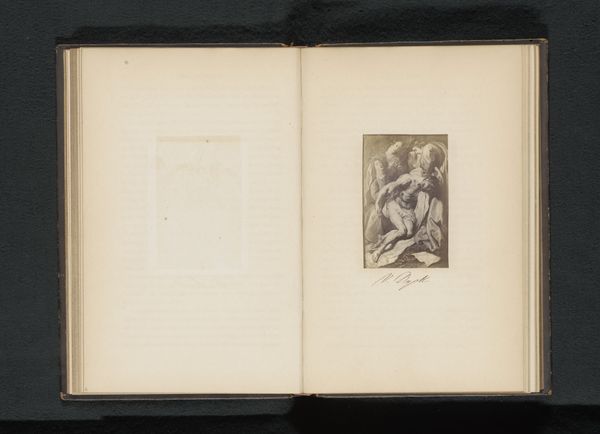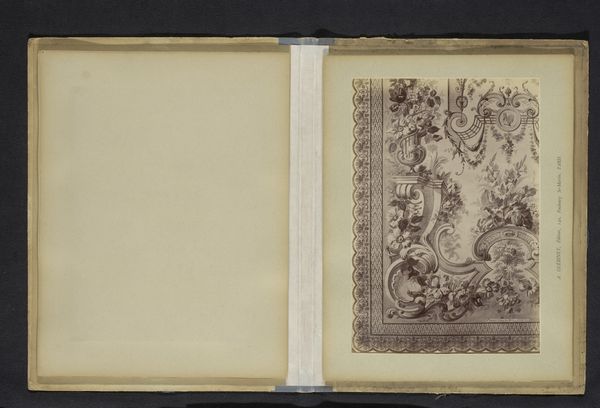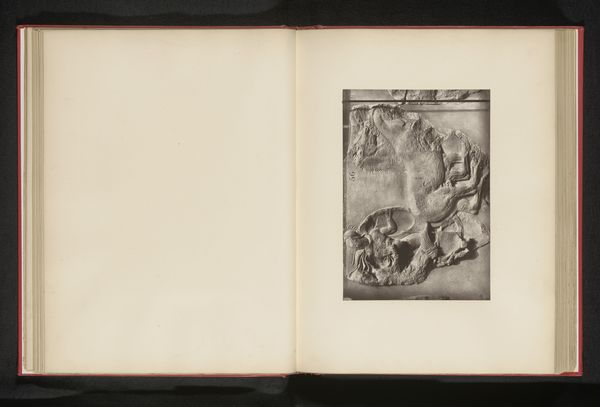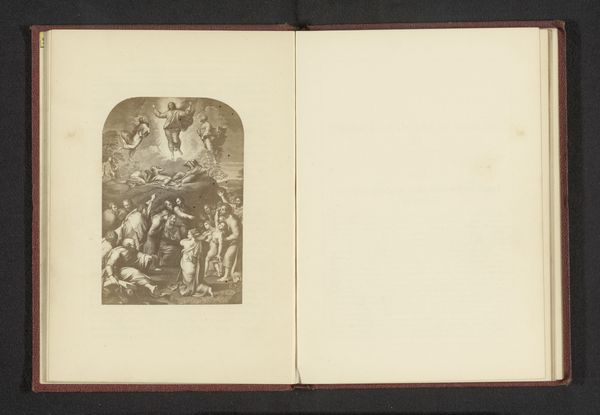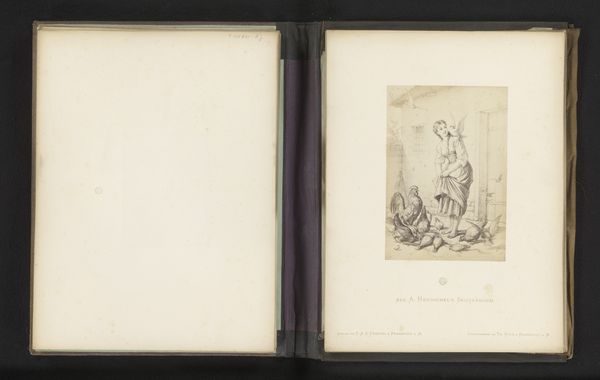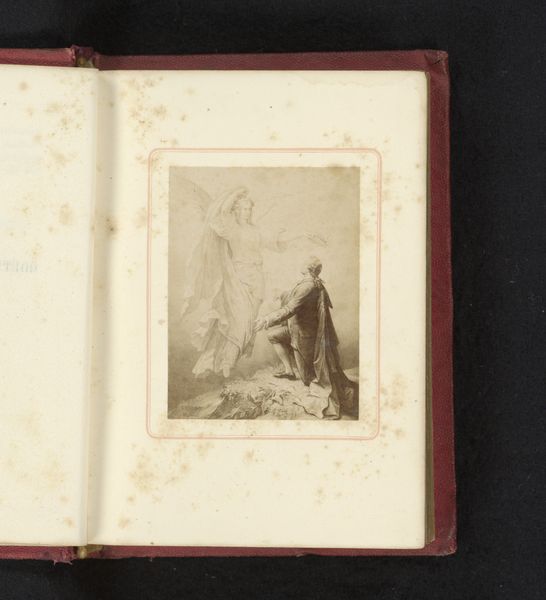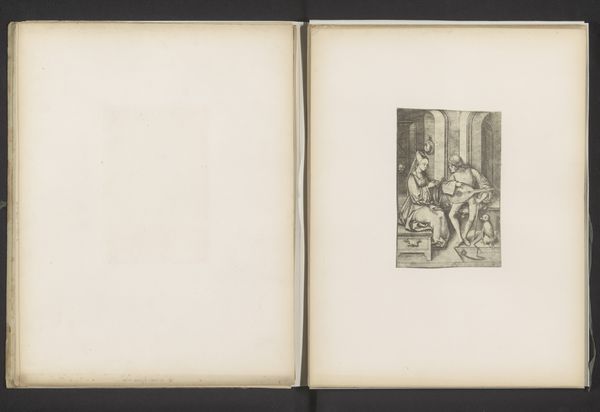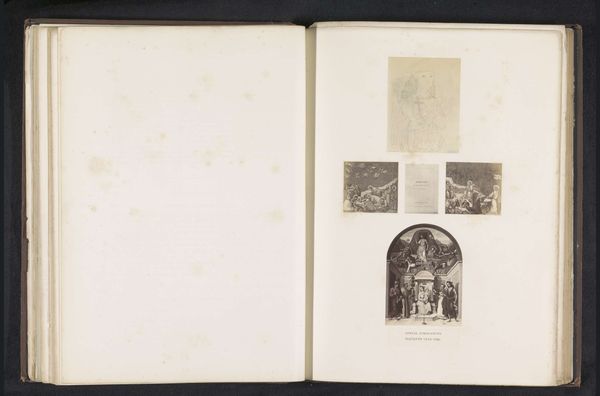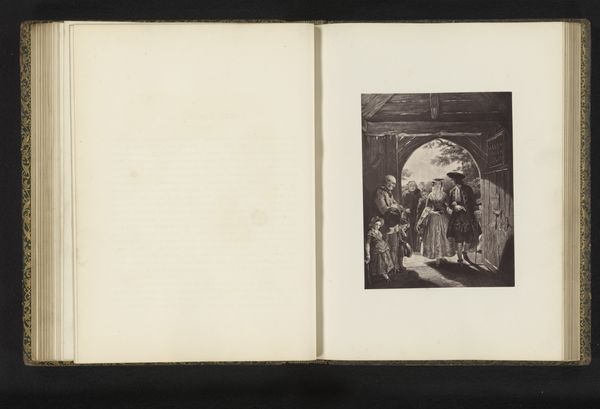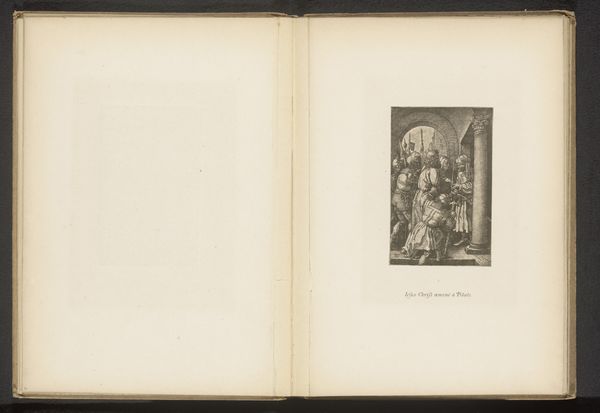
Dimensions: height 104 mm, width 101 mm
Copyright: Rijks Museum: Open Domain
Curator: I'm immediately struck by the book-like quality, and the hand-drawn embellishments. The texture of that paper looks so tactile. Editor: Indeed. What we are observing is a page taken from a sketchbook by Adelaide Hanscom Leeson. Dating from before 1916, this study is entitled “Vrouw met naakt kind in een landschap, omlijst met bloesem," which translates to “Woman with nude child in a landscape, framed with blossom." Curator: "Framed" is an excellent choice of words! The composition creates such intimacy, the way that blossom frame both protects and elevates this archetypal image of motherhood. Editor: I wonder about the conditions of its creation. This wasn’t just pulled off the shelf; its binding and aged nature are indicators of value but also everyday handling. The deliberate act of turning the page connects us directly to the artist’s process, and maybe even its social circulation within their personal sphere. Curator: Absolutely, and consider the use of the nude figure here. It recalls classical images of Venus, yet firmly plants the woman in an identifiable terrestrial landscape. Is she a goddess? A mortal mother? The symbolism is quite complex. We should not ignore either that Leeson was herself an accomplished Pictorialist photographer, working when women had an ambivalent status as camera-workers: marginalized, and yet uniquely positioned as producers of imagery for domestic consumption and for self-expression. Curator: It brings forth ideas about the relationship between representation and experience. Is this an idealized version of motherhood, or an attempt to capture something genuinely felt? Editor: That the medium here is photography informs it significantly; think of the resources that were involved: specific darkroom techniques, and material processing to give the work the distinctive tonal range that defines it now. How has this materiality aged over time, and can we tell which processes it went through? I'm wondering, what’s more fascinating: the final result, or how the work became "final" in the first place? Curator: Ultimately, this is an object of both immense tenderness and deliberate intellectual design, with connections to multiple image traditions. Its placement in a hand-made volume makes the artwork resonate even further. Editor: I concur! The intersection of the high-minded concept, plus humble support--it elevates both in equal measure.
Comments
No comments
Be the first to comment and join the conversation on the ultimate creative platform.

